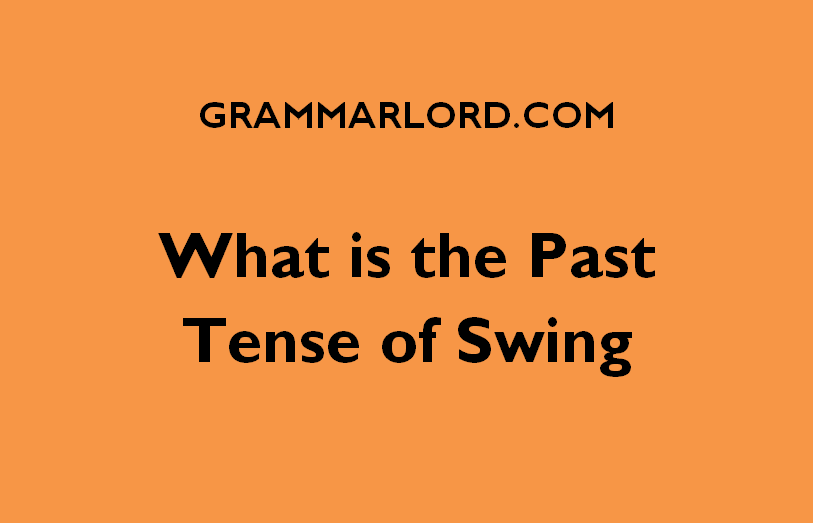So, the question on everyone’s mind: “What is the past tense of swing?” I know you might just be thinking, “Isn’t it ‘swung’?
Well, hold your horses (or swings, if you prefer). While “swung” is indeed the most common and accepted past tense of “swing,” there’s a bit more to the story. This article is set to tell the story.
Contents
Here Are The Tales of “Swing”
See, “swing” falls into the category of verbs called irregulars. These guys don’t follow the usual “add an -ed” rule to form the past tense.
They’re like the rebels of the verb world, shaking things up in their unique ways. And “swing” is one of them, proudly waving its “u” flag instead of the standard “ed.”
READ ALSO: Steps to Uncovering the Past Tense of Swim
But Wait, There’s A Twist!
Some corners of the English language still whisper of another past tense for “swing”: “swang.” Now, this one is considered archaic, meaning it’s kind of like the dusty version of “swung.”
You might hear it in old books or spoken by someone who learned English before the internet even existed (wild, right?).
So, which one Should You Use?
Well, that depends on where you want to take your time machine. If you’re writing a contemporary novel, “swung” is your go-to guy.
It’s clear, concise, and won’t raise any eyebrows. But if you’re channeling your inner Charles Dickens or Jane Austen, then “swang” might be the secret sauce that adds a touch of vintage charm.
Don’t forget, words are all about communication and understanding. As long as your audience gets your meaning, whether it’s “swung” or “swang,” you’re the master of your time-traveling verb.
And hey, if anyone ever tries to give you a hard time about “swang” being outdated, just tell them it’s a vintage verb, like a classic car with a whole lot of character. They’ll be too busy admiring your linguistic swagger to even notice the lack of an “ed.”
READ ALSO: A Reflection on The Past Tense of Ride
Ways To Use “Swing”, Depending on The Context
1. As a Verb:
Swing: Present tense, meaning to move back and forth or from side to side.
Example: The child is swinging on the playground.
Swung: Past tense of “swing.”
Example: Yesterday, I swung a hammer to build a birdhouse.
Example: The door had been swung open by the wind.
2. As a Noun:
Swing: A specific type of playground toy with a seat suspended on chains or ropes.
Example: We spent the afternoon pushing each other on the swing.
Swung: Not normally used as a noun on its own.
3. Other forms:
Swinging: Present participle of “swing.”
Example: She was swinging her keys as she walked down the street.
Swung: Can also be the past participle of “swing” (alongside “swang”).
Example: The gate had been swung shut but not locked.
Additionally:
Swing can be used figuratively, like “the pendulum of public opinion swung in his favor.” Swinging can also be slang for dancing or engaging in casual intimate activity.
READ ALSO: Steps to Make Sense of the Past Tense of Smell
Final Thoughts
Now you know why I mentioned that the past tense of “swing” is a journey through time, a playground for rebels, and a reminder that even verbs can have secrets.
You can now swing those sentences with confidence, knowing you’ve got the past tense covered, no matter which time zone you’re writing in.
As long as your audience gets your meaning, whether it’s “swung” or “swang,” you’re the master of your time-traveling verb.

